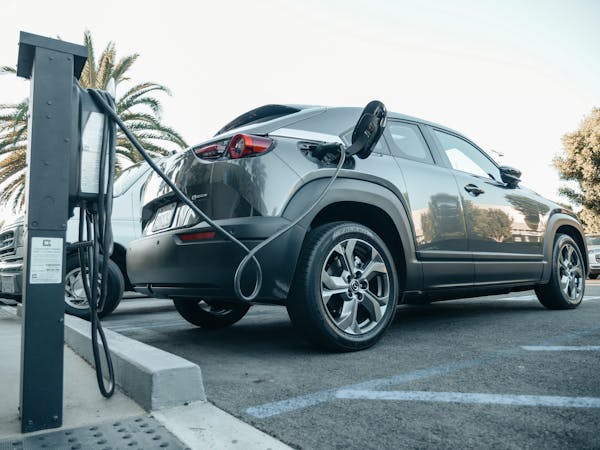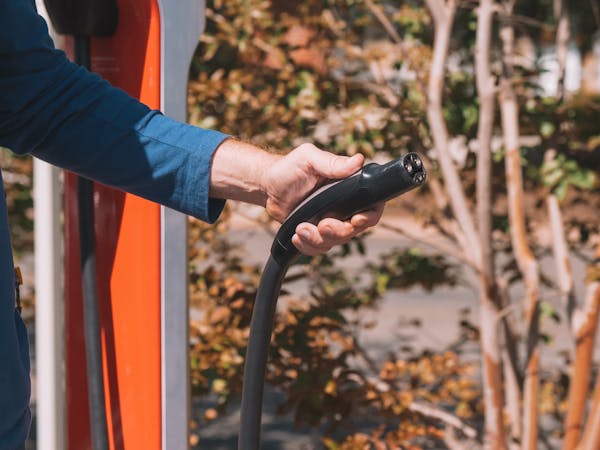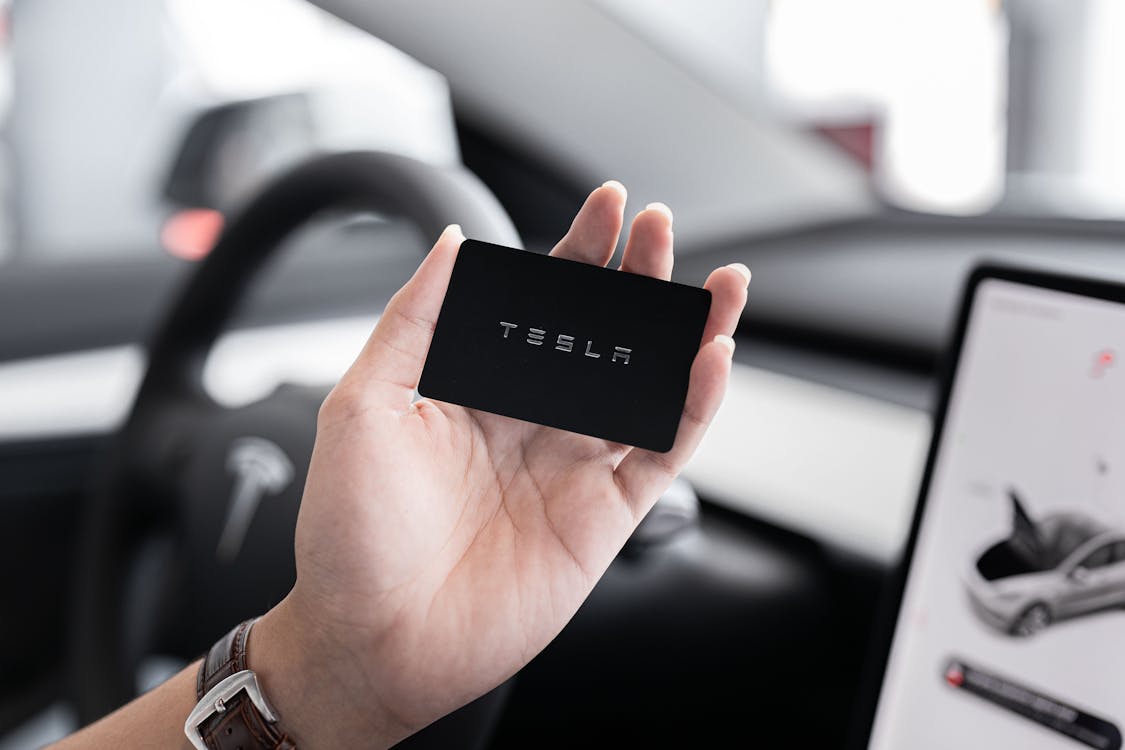Charge Tesla at home is the ultimate comfort of your own home! Learn how to easily set up a charging station that is fast, reliable, and cost-effective. and make sure your Tesla is always full of juice and enjoy the convenience of never having to worry about finding a charging station again!
Technology has come a long way in the last decade and nowhere is this more evident than electric cars. Tesla, the leading electric vehicle manufacturer, has made charging your car at home an easy and convenient process with their streamlined technology.
As electric vehicles become increasingly popular, being able to charge them at home is becoming a major convenience for drivers. Tesla owners can benefit from the company’s dedicated home charging equipment, offering an efficient and easy way to get their vehicles powered up. With a few simple steps, you can have your Tesla fully charged and ready to go in no time.
It’s no secret that Tesla is a leader in the electric car revolution. With their revolutionary products, Tesla has changed the way we think about personal transportation. Now, you can charge your Tesla at home, making it easy and convenient to power your vehicle overnight. This article will explain all you need to know about charging your Tesla at home, including the cost and equipment required. You’ll be surprised at how simple it is to keep your Tesla running with this option!
With the ability to charge your Tesla from home, you no longer have to worry about finding a charging station and can instead enjoy an effortless experience that is sure to save you time and money.
Benefits of Home Charging
In today’s world, electric vehicles are becoming increasingly popular as an environmentally-friendly and efficient way to get from A to B. Home charging is one of the most convenient ways for electric vehicle owners to ensure their vehicles stay charged and ready for use. Home charging offers a range of benefits, including convenience, cost savings, and environmental protection. It is important to understand the advantages of home charging in order to make the most out of your electric vehicle experience.
Electric vehicles are becoming increasingly popular, and with this trend comes the need for reliable home charging options. Tesla is one of the leading electric car manufacturers, and their cars offer drivers a range of benefits when it comes to home charging. From convenience to cost savings, here are some of the ways in which charging your Tesla at home can benefit you.
Firstly, installing a charger at home means that you’ll always have access to power for your vehicle. This convenience allows you to charge anytime without having to worry about finding a public charger or waiting in line. Alongside this ease of use comes time savings; with a level-2 charger installed, you can expect around 30 miles per hour of charge – meaning that topping up overnight will be enough for most trips without needing an extra stop on the route.

Home charging is a convenient and cost-effective way to power your electric vehicle (EV). Installing a home charging system has several benefits for EV owners, ranging from financial savings to convenience.
One of the major benefits of home charging is that it allows drivers to take advantage of lower night-time electricity rates. Many electricity companies offer reduced rates during off-peak hours, providing an opportunity for significant savings on energy costs over time. Additionally, drivers who have access to solar panels can further reduce their electricity bills by taking advantage of free solar power during the day.
Another key benefit to home charging is that it eliminates the need for drivers to search for public or workplace chargers when out and about.
For one thing, it’s simple and secure – after all, you’re in control of where and when you charge your car. There’s no need to worry about availability or security at public chargers. Home charging also allows you to take advantage of off-peak electricity prices during certain times of day or night which can help save money on energy costs over time.
Steps you should follow to charge Tesla at home.
Necessary Equipment
Charging a Tesla electric vehicle is easy and cost-effective, but it does require some specialized equipment. To get started, owners must first purchase the correct charging cable and adapter for their Tesla. All Teslas come standard with a mobile charging cord that can be plugged into a regular 120-volt wall outlet, but if owners want to charge faster they will need to invest in an additional charging cable and adapter.
- charging cable and adapter
- mobile charging cord
- wall connector
The next step is to install either a wall connector or a NEMA 14-50 outlet depending on the type of vehicle and how fast one wants to charge. Wall connectors are designed specifically for Tesla vehicles and provide up to 80 amps of power, allowing drivers to charge their cars faster than with a regular outlet. NEMA 14-50 outlets are more versatile as they provide up to 50 amps of power which makes them suitable for other electric vehicles too.
Installation Process
Installing the necessary equipment to charge a Tesla can be a daunting task for those new to the process. Luckily, with the right materials and preparation, it is relatively easy for anyone to install the proper charging station at their home or other desired location. Whether you plan on charging your Tesla indoors or outdoors, there are a few key steps you should take in order to ensure the most efficient and safe installation possible.
The installation process for the necessary equipment to charge a Tesla is crucial for making sure that you are able to maintain and conveniently use your electric vehicle. To begin, Tesla recommends having an electrician come out to assess the current electrical setup of your home or workplace in order to determine if it is sufficient for charging purposes. If necessary, you may need to upgrade the electrical system so that it can adequately handle the load from your car’s charger.

The first step in properly installing a charger for your Tesla is to select an appropriate location. Homeowners should choose somewhere near their vehicle parking area in order to make it easy and convenient to access when charging. Additionally, they’ll need to consider whether they’d like the charger mounted indoors or outdoors, as well as if they require additional cable length or outlets in order to make the connection complete.
Once the power requirements have been established, then you can look into purchasing and installing a dedicated charger for your Tesla. You should research different models and brands available on the market in order to find one that best fits your needs and budget. Furthermore, depending on where you decide to purchase from, you may even be able to get an installation package with certified technicians who will install everything correctly based on local safety regulations.
Cost Considerations
The Tesla Model S has an impressive range of 405 miles per charge and costs $17.55 for a full charge when using the standard variant charger. This price can vary depending on different factors such as electricity rates and actual distance drove. In addition to this one-off cost, there is also a recurring monthly fee associated with charging your car at home which includes installation charges and subscription fees for various services provided by Tesla like Supercharging or Home Charging access.
The cost of charging a Tesla at home is an important consideration for any potential Tesla owner. Many people are attracted to the idea of owning a Tesla because of its low emissions and high levels of energy efficiency, but they may be unaware of the costs associated with charging it at home. To be sure that you’re making the right decision financially, consider the following cost considerations before taking your Tesla home.

The first factor to consider when deciding whether or not to charge your Tesla at home is installation costs. Depending on where you live and what kind of power connection you have in your garage or driveway, there may be some additional costs associated with having a professional come out and install a charger for you. This cost can vary significantly depending on the type and size of charger needed and should definitely factor into your initial budgeting process.
Charging a Tesla at home is a better option than going to an external charging station according to cost. Home charging eliminates the need to pay for parking when you arrive at the station and makes it easier to charge your car overnight, which can help save on electricity costs. Additionally, you’ll save money by avoiding frequent trips to the gas pump as well as any potential service fees or surcharges from public EV chargers.
For those who live in an apartment complex or other area where there is limited access to home charging, many public EV charging stations are available throughout the country. The cost of these varies depending on location, but typically ranges from $0.09-0.15 per kWh for Level 2 chargers (240V) and $0.25-0.35 per kWh for DC fast chargers (480V).
Plugging In and Monitoring Usage
As more people are purchasing electric cars, plugging in and monitoring usage while charging a Tesla at home has become increasingly important. For those who own a Tesla or other electric car, knowing how to safely monitor the charging process is essential. Plugging in and monitoring the electricity usage of your vehicle can help you save money on energy costs and ensure that your car’s battery receives a full charge without overloading your home’s power system.
To begin, it is important to know the different types of chargers available for Tesla models. The most common type of charger is an adjustable level 1 portable charger which plugs into any standard 120-volt wall outlet. Level 2 chargers require an upgraded electrical panel or subpanel, but they offer significantly faster charging times than their lower voltage counterparts.

Tesla vehicles are quickly becoming one of the most popular electric cars on the market. For owners of this vehicle, charging at home is an important part of their own experience. There are three levels of chargers available for Tesla owners – Level 1 (120 volts) charging, Level 2 (240 volts) charging, and Level 3 (480 volts) Supercharging or DC fast charging.
Level 1 charging is the most basic form of electric vehicle (EV) charging and requires a standard 120-volt household outlet. This method provides a slow charge that can take as long as 24 hours to fully charge the battery from empty. However, it’s convenient since it can be used almost anywhere with access to an electrical outlet. Level 2 chargers offer more power than level 1 chargers and require professional installation due to their 240-volt power requirement.
One of the best features of owning a Tesla is the fact that you can’t overcharge it. The vehicle will charge to whatever limit you set it to. This ensures owners don’t waste any energy by leaving their car plugged in for too long or increasing the charging levels beyond what’s necessary. In addition, if you leave your Tesla plugged in, it will sustain that level of charge – no need to worry about running out of juice!
Overall, owning a Tesla is an excellent way to reduce your carbon footprint while also enjoying all of the benefits that come with driving an electric car.
Advantages of the Tesla Mobile App
Tesla’s mobile app is the perfect companion for Tesla vehicle owners. It offers convenience and control over the driving experience like no other car on the market. With its user-friendly interface, owners can access a variety of features to make their lives easier and their drives more enjoyable.
The most obvious advantage of the Tesla mobile app is that it allows users to control certain functions of their car remotely. By connecting to the vehicle’s WiFi, users can access a range of features such as checking the charging status and enabling climate control from wherever they are. This makes it much easier for owners to keep an eye on their car when it’s out of sight and also saves time by eliminating trips back to the car for forgotten items like sunglasses or phones.
Another great advantage of this app is that it allows users to plan routes more efficiently by providing real-time traffic updates and mapping out charging stations along the way.

Using the app, drivers can unlock or lock their car from afar, which is especially useful if you’ve forgotten your keys at home or have locked yourself out of your vehicle. You can also check to charge status and plan a route to your destination from within the app. In addition, you can monitor your energy consumption and customize certain settings such as air conditioning or music preferences in advance so you don’t have to waste time fiddling with them once you get into your car.
- Learn more about ” How to Charge a Tesla in Under One Hour: The Easy Guide “
Conclusion
Driving a Tesla is an exciting experience. One of the greatest advantages when owning a Tesla is the ability to charge your car at home. This allows you to save time and money while also having the convenience of charging your car in the comfort of your own garage. No more trips to the gas station! With advances in technology, it’s easier than ever to charge your Tesla at home.
Having a Tesla charger installed in your home is an excellent way to save money and use renewable energy sources for your vehicle. It is also a great way to reduce your dependence on fossil fuels and contribute to a cleaner environment. Installation of the Tesla charger can be completed quickly, safely, and efficiently by a professional electrician. Most importantly, you can enjoy the convenience of charging your Tesla at home and reap the rewards of having clean, reliable transportation.
In conclusion, the cost of charging your Tesla at home is not only more convenient and easier to manage, but it is also more cost-effective than other charging solutions. The purchase of a Tesla wall connector is a necessary initial investment, but the savings from this solution will add up over time. Additionally, with the continued development of solar energy and additional government incentives, the cost associated with charging a Tesla at home will only be further reduced in the future.

